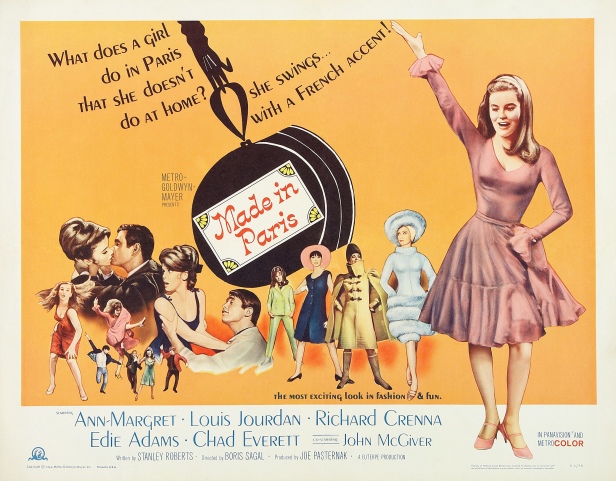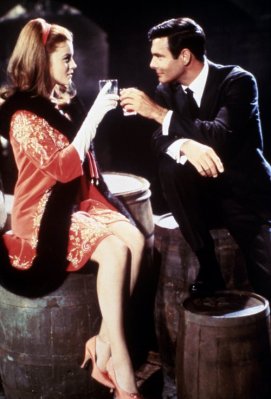Maggie Scott (Ann-Margret) is a fashion buyer’s assistant at a prominent New York department store. She’s risen from model to salesgirl to assistant buyer in a matter of only a few years.
When the buyer she works for, Irene Chase (Edie Adams), has to miss some Paris fashion shows for her wedding, store owner Mr. Barclay (John McGiver) decides to send Maggie as her stand-in.
Maggie is surprised by Barclay’s decision, thinking she has no chance of moving up or gaining new opportunities after rejecting the advances of Barclay’s womanizing son, Ted (Chad Everett). Regardless of the seeming impossibility of it all, she’s also very excited, as this will be her first visit to the City of Love.

Upon arrival in France, Maggie finds that her trip will be a little more difficult than she expected. One of the designers she’s meant to order from, Marc Fontaine (Louis Jourdan), has a romantic history with Irene and is none to happy to learn that she’s marrying.
Boris Sagal (Girl Happy) directs 1966’s Made in Paris. The film was written by Stanley Roberts (The Caine Mutiny, Death of a Salesman).
Made in Paris offers an interesting little slice of the 1960s and of the culture in the fashion industry. Like Hollywood, the fashion industry is full of glamorous people making glamorous art… and living a little bit on the wild side. As a portrayal of this, Made in Paris is pretty tame, tracking a young woman’s first experiences with charming designers and Parisian clubs but skipping out on much of the drugs and debauchery you’d expect. It’s a much more romanticized version of the adventure than you’d ever see on screen today.

Ann-Margret gives a good performance, playing Maggie as a young woman who is excited to travel to Paris but is in no way naive. She’s there to do a job, and it’s a job she’s very good at. She’s quite clever, with an acute awareness of herself, those around her, and the way the world operates. She uses this knowledge to her advantage, whether she’s trying to further her career or setting her sights on winning the affection of Marc Fontaine.
Since this is an Ann-Margret film there is, inevitably, a pretty corny (but also fun) dancing scene. Maggie tries her best to craft some impressive freestyle choreography at a club, where she knows Marc is watching from a table on the upper balcony.
In my mind, the most striking aspect of the film is the use of costumes by Helen Rose, whose credits also include Stormy Weather, The Harvey Girls, On the Town, Mogambo, and Designing Woman. The fashions featured in the film are a real treat to see — dazzling, well-crafted, and at times just a little bit wacky in such a way that they could only be products of the 1960s. Edie Adams, about to meet with her husband-to-be as he waits in a limousine outside, wears an extravagant, glittering, feathered black dress with matching cape. For her arrival in Paris, Ann-Margret wears a powder blue hat tall enough to stuff a very full beehive hairdo into, matched with a powder blue dress, fur-accented coat and white briefcase. And then there’s a whole fashion show scene, adorned with bright orange fabrics and bedazzled bodices!
Anyone interested in vintage fashion is sure to enjoy this film, for its visual appeal at the very least. For those who don’t care for couture, I can’t say I’d recommend the film incredibly highly, though of course fans of Ann-Margret will want to tune in. The score: 3/5
This movie sounds 100% up my alley
LikeLike